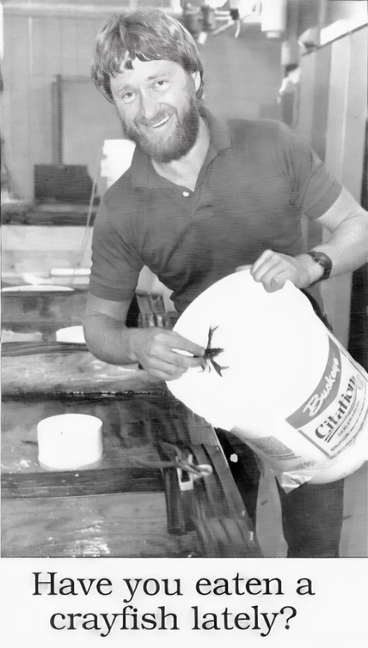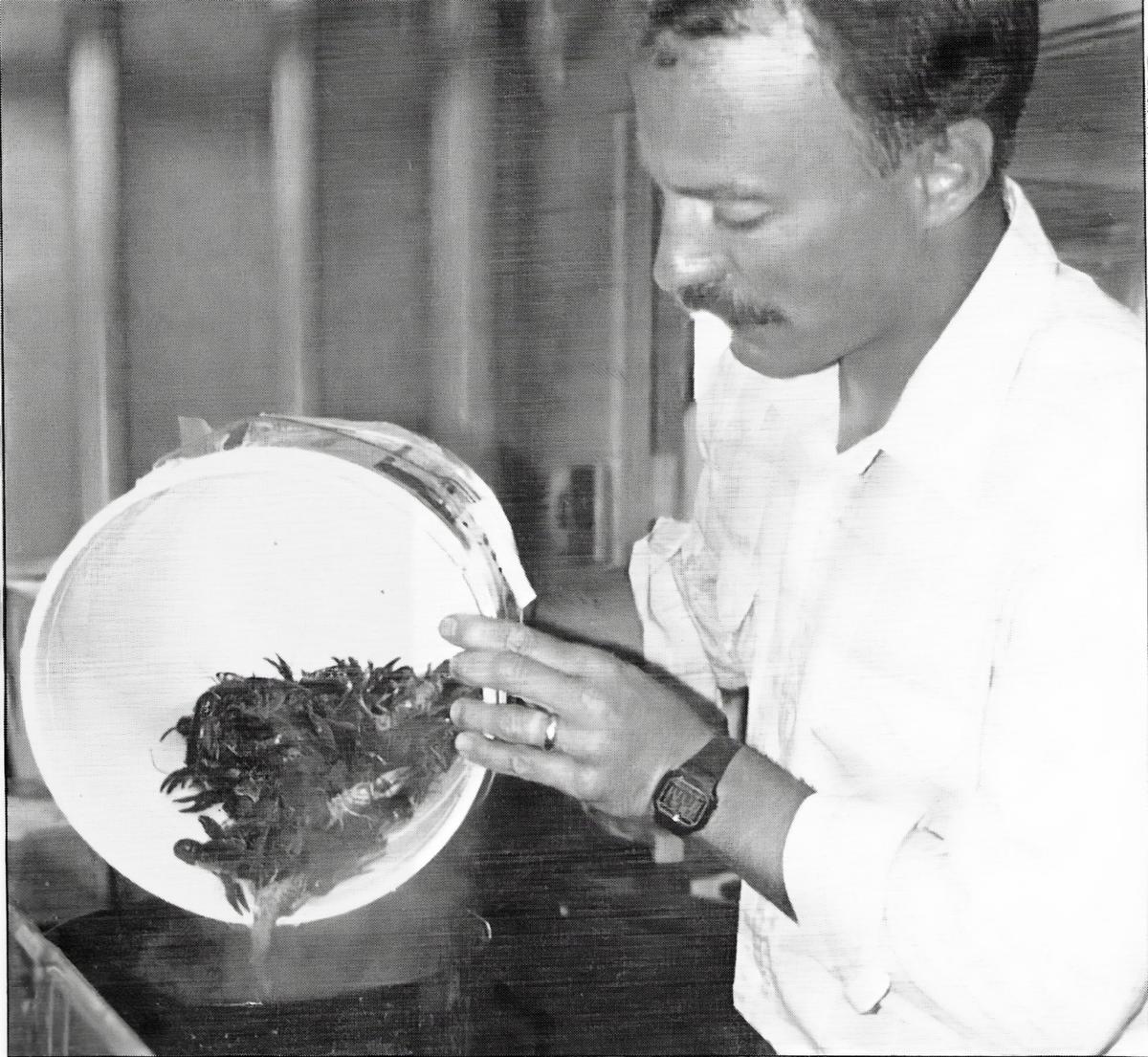Back in the late 1980s, NRRI established The Crayfish Lab, tucked into a corner on the first floor of the Duluth facility. Lab 126 still carries that name today, though the crayfish have been replaced with other water-related projects.
But at one point hundreds of crayfish crawled about in specially designed holding trays – only occasionally escaping and skittering about. NRRI’s research was focused on improving the marketability of tasty softshell crayfish for, what was then, a growing commodity.

According to the Fall 1989 NRRI Now, Freshwater Crayfish Ltd. of Duluth shipped nearly nine tons of crayfish to Sweden and expected that to grow to 500 tons the next year. Minnesota businesses started becoming serious about processing and marketing crayfish, with markets opening up in Minnesota, Wisconsin and the Twin Cities. Hopes were high then to expand markets in Europe and in the U.S. bait industry.
The research had multiple goals. One, they wanted to better understand the molting cycles to optimize the timing of harvesting after the shell is shed. Secondly, they looked at automating the softshell shedding, which was being done by hand for each individual crayfish. Another goal involved testing different water temperatures and lighting to determine if molting could be sped up or slowed down – factors that would influence shipping, trapping and holding methods for a crayfish business.
According to Glenn Merrick, one of the scientists who worked on the project, there were a number of hurdles that impacted progress..The crayfish export market was too fickle to sustain a viable industry and manipulating the molting was too labor intensive. The local crayfish cuisine market didn’t catch on either.
